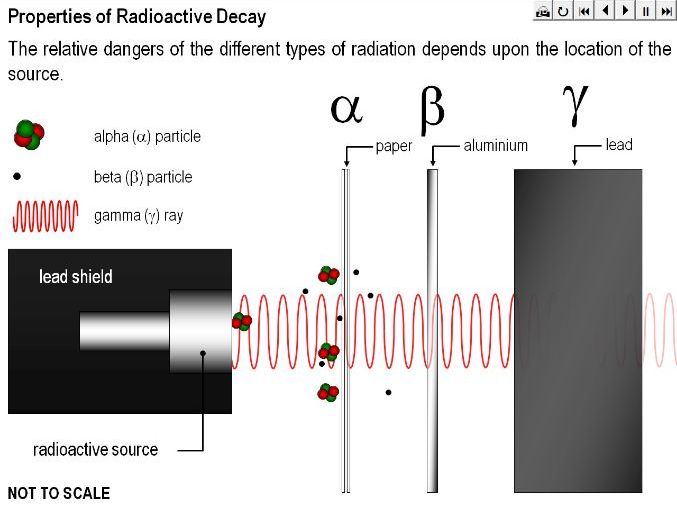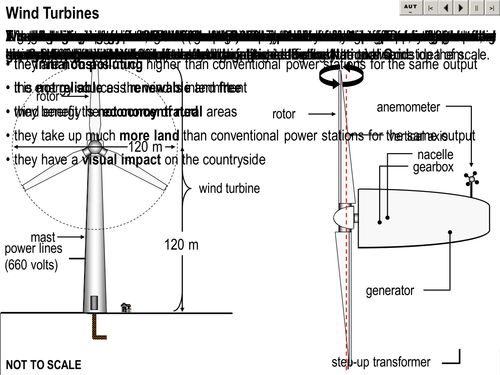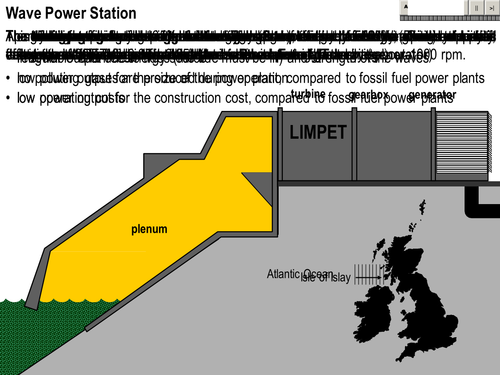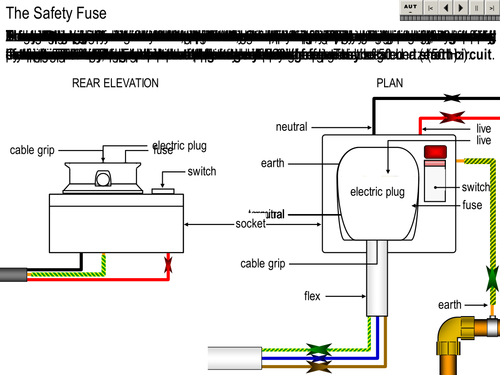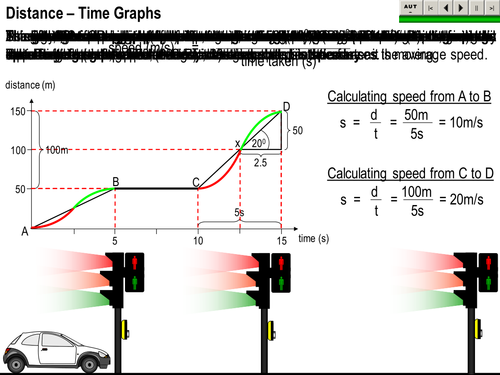
34Uploads
42k+Views
26k+Downloads
Physics

Properties of Radioactive Decay
The main presentation is a PowerPoint with animated sequences showing the properties of radioactive decay.
Support Material
Readme (instructions for whole lesson)
Learning Outcomes (PowerPoint)
Starter Activity (PowerPoint and Worksheet)
Main Activity (PowerPoint with worksheets and answer sheets)
Lesson Notes (hand-out)
Plenary Activity (PowerPoint and worksheet)
It is intended for all science teachers but particularly those who are not physics specialists. It is, primarily, aimed at 14 to 16 year old pupils but can also be used at a higher level as a precursor to a more in-depth study of this topic. Normally, the activities would fill a 45 to 60 minute lesson but could be spread over two lessons if needs be.
If you buy this resource, please print the Readme document as it contains the instructions and details of the files included.
Learning Outcomes
The learning outcomes are based on Bloom’s taxonomy of hierarchical classification: knowledge, comprehension, application, analysis, synthesis and evaluation. The lesson title and learning outcomes are:
What are the Properties of Radioactive Decay?
Learning Outcomes
Knowledge
to describe the three different types of radioactive decay
to state the penetrating properties of the different types of radioactive decay
Differentiation
The activities have varying degrees of differentiation; please refer to the Readme document.

Ohm's Law and Resistance
The main presentation is a PowerPoint with animated sequences showing the relationship between voltage and current across a fixed resistance.
Support Material
Readme (instructions for whole lesson)
Learning Outcomes (PowerPoint)
Starter Activity (PowerPoint and Worksheet)
Main Activity (PowerPoint with worksheets and answer sheets)
Lesson Notes (hand-out)
Plenary Activity (PowerPoint and worksheet)
It is intended for all science teachers but particularly those who are not physics specialists. It is, primarily, aimed at 14 to 16 year old pupils but can also be used at a higher level as a precursor to a more in-depth study of this topic. Normally, the activities would fill a 45 to 60 minute lesson but could be spread over two lessons if needs be.
If you buy this resource, please print the Readme document as it contains the instructions and details of the files included.
Learning Outcomes
The learning outcomes are based on Bloom’s taxonomy of hierarchical classification: knowledge, comprehension, application, analysis, synthesis and evaluation. The lesson title and learning outcomes are:
What Is The Relationship Between Current, Voltage And Resistance?
Learning Outcomes
Knowledge
to identify the components needed to investigate Ohm’s Law and to draw the circuit diagram
to describe the effect that voltage has on current
to describe the effect that heat has on resistance of conductors and semi-conductors
Analysis
to use Ohm’s Law to calculate voltage, current and resistance
Differentiation
The activities have varying degrees of differentiation; please refer to the Readme document.

Rutherford-Bohr Atomic Model
The main presentation is a PowerPoint with animated sequences showing the structure of the Rutherford-Bohr atomic model
Support Material
Readme (instructions for whole lesson)
Learning Outcomes (PowerPoint)
Starter Activity (PowerPoint and Worksheet)
Main Activity (PowerPoint with worksheets and answer sheets)
Lesson Notes (hand-out)
Plenary Activity (PowerPoint and worksheet)
It is intended for all science teachers but particularly those who are not physics specialists. It is, primarily, aimed at 14 to 16 year old pupils but can also be used at a higher level as a precursor to a more in-depth study of this topic. Normally, the activities would fill a 60 minute lesson but could be spread over two lessons if needs be.
If you buy this resource, please print the Readme document as it contains the instructions and details of the files included.
Learning Outcomes
The learning outcomes are based on Bloom’s taxonomy of hierarchical classification: knowledge, comprehension, application, analysis, synthesis and evaluation. The lesson title and learning outcomes are:
How Does Atomic Number Dictate Position In The Periodic Table?
Learning Outcomes
Knowledge
to state the properties of sub-atomic particles
to define atomic number and mass number
Comprehension
to state the difference between group number and period number
Analysis
to calculate the number of neutrons from the mass number and atomic number
Differentiation
The activities have varying degrees of differentiation; please refer to the Readme document.

States of Matter
The main presentation is a PowerPoint with animated sequences showing the differences between solids, liquids and gases.
Support Material
Readme (instructions for whole lesson)
Learning Outcomes (PowerPoint)
Starter Activity (PowerPoint and Worksheet)
Main Activity (PowerPoint with worksheets and answer sheets)
Lesson Notes (hand-out)
Plenary Activity (PowerPoint and worksheet)
It is intended for all science teachers but particularly those who are not physics specialists. It is, primarily, aimed at 14 to 16 year old pupils but can also be used for younger pupils as a precursor to a more in-depth study of this topic. Normally, the activities would fill a 45 to 60 minute lesson.
If you buy this resource, please print the Readme document as it contains the instructions and details of the files included.
Learning Outcomes
The learning outcomes are based on Bloom’s taxonomy of hierarchical classification: knowledge, comprehension, application, analysis, synthesis and evaluation. The lesson title and learning outcomes are:
What Is The Difference Between Solids, Liquids and Gases?
Learning Outcomes
Knowledge
to describe the arrangement and motion of particles in solids, liquids and gases.
to state the properties of solids, liquids and gases.
Differentiation
The activities have varying degrees of differentiation; please refer to the Readme document.

Night and Day
The main presentation is a PowerPoint with animated sequences showing how the rotation of the Earth results in night and day.
Support Material
Readme (instructions for whole lesson)
Learning Outcomes (PowerPoint)
Starter Activity (PowerPoint and Worksheet)
Main Activity (PowerPoint with worksheets and answer sheets)
Lesson Notes (hand-out)
Plenary Activity (PowerPoint and worksheet)
It is intended for all science teachers but particularly those who are not physics specialists. It is, primarily, aimed at 11 to 14 year old pupils but can also be used with younger pupils as a precursor to a more in-depth study of this topic. Normally, the activities would fill a 45 to 60 minute lesson.
If you buy this resource, please print the Readme document as it contains the instructions and details of the files included.
Learning Outcomes
The learning outcomes are based on Bloom’s taxonomy of hierarchical classification: knowledge, comprehension, application, analysis, synthesis and evaluation. The lesson title and learning outcomes are:
Why Do We Have Night And Day?
Learning Outcomes
Knowledge
to describe the Earth’s 24 hour cycle and how this results in day and night
to recognise the effect that the tilt of the Earth’s axis has on the northern and southern hemispheres
Analysis
to compare the relative times of day in different parts of the World.
Differentiation
The activities have varying degrees of differentiation; please refer to the Readme document.

Dispersion of White Light
The main presentation is a PowerPoint with animated sequences showing how white light is split-up into its component colours.
Support Material
Readme (instructions for whole lesson)
Learning Outcomes (PowerPoint)
Starter Activity (PowerPoint and Worksheet)
Main Activity (PowerPoint with worksheets and answer sheets)
Lesson Notes (hand-out)
Plenary Activity (PowerPoint and worksheet)
It is intended for all science teachers but particularly those who are not physics specialists. It is, primarily, aimed at 14 to 16 year old pupils but can also be used with younger pupils and at a higher level as a precursor to a more in-depth study of this topic. Normally, the activities would fill a 45 to 60 minute lesson but could be spread over two lessons if needs be.
If you buy this resource, please print the Readme document as it contains the instructions and details of the files included.
Learning Outcomes
The learning outcomes are based on Bloom’s taxonomy of hierarchical classification: knowledge, comprehension, application, analysis, synthesis and evaluation. The lesson title and learning outcomes are:
How Can Light Be Split Up Into Its Component Colours?
Learning Outcomes
Knowledge
to identify the colours of the spectrum
to identify the colour of the spectrum that is refracted the most and the colour that is refracted the least
Comprehension
to explain how the amount of refraction produces the colour spectrum
Differentiation
The activities have varying degrees of differentiation; please refer to the Readme document.

Gravitational Potential Energy
The main presentation is a PowerPoint with animated sequences using a roller coaster to show the transfer of gravitational potential energy to kinetic energy, and visa versa.
Support Material
Readme (instructions for whole lesson)
Learning Outcomes (PowerPoint)
Starter Activity (PowerPoint and Worksheet)
Main Activity (PowerPoint with worksheets and answer sheets)
Lesson Notes (hand-out)
Plenary Activity (PowerPoint and worksheet)
It is intended for all science teachers but particularly those who are not physics specialists. It is, primarily, aimed at 14 to 16 year old pupils but can also be used for more able younger pupils or at a higher level as a precursor to a more in-depth study of this topic. Normally, the activities would fill a 45 to 60 minute lesson but could be spread over two lessons if needs be.
If you buy this resource, please print the Readme document as it contains the instructions and details of the files included.
Learning Outcomes
The learning outcomes are based on Bloom’s taxonomy of hierarchical classification: knowledge, comprehension, application, analysis, synthesis and evaluation. The lesson title and learning outcomes are:
How Do Roller Coasters Work?
Learning Outcomes
Analysis
to calculate gravitational potential energy (GPE).
to infer the gain in kinetic energy (KE) from the amount of GPE transferred.
Differentiation
The activities have varying degrees of differentiation; please refer to the Readme document.

Electromagnetic Induction
The main presentation is a PowerPoint with animated sequences showing how a voltage is induced across a coil of wire as a magnetic field cuts through it.
Support Material
Readme (instructions for whole lesson)
Learning Outcomes (PowerPoint)
Starter Activity (PowerPoint and Worksheet)
Main Activity (PowerPoint with worksheets and answer sheets)
Lesson Notes (hand-out)
Plenary Activity (PowerPoint and worksheet)
It is intended for all science teachers but particularly those who are not physics specialists. It is, primarily, aimed at 14 to 16 year old pupils but can also be used at a higher level as a precursor to a more in-depth study of this topic. Normally, the activities would fill a 45 to 60 minute lesson but could be spread over two lessons if needs be.
If you buy this resource, please print the Readme document as it contains the instructions and details of the files included.
Learning Outcomes
The learning outcomes are based on Bloom’s taxonomy of hierarchical classification: knowledge, comprehension, application, analysis, synthesis and evaluation. The lesson title and learning outcomes are:
How Can electricity Be Generated Using Magnetism?
Learning Outcomes
Knowledge
to describe the effect a magnetic field has on a conductor
to identify the factors that determine the size of the induced voltage in a conductor
Differentiation
The activities have varying degrees of differentiation; please refer to the Readme document.

Apollo 11 and the Moon Landing
A montage with music and narration that explores the political and technological developments during the cold war. A big file (15MB) , so please wait.
I tried to load it on the 40th anniversary of the Moon landing but the file was too big. Maybe the TES are able to accommodate bigger files now.
cold war
space exploration
moon landings
ussr
usa

Wind Turbines
A PPT (02+) with animated sequences showing the major components and demonstrating how wind turbines turn the energy of the wind into electricity. During animations a bar appears under the navigation buttons that wipes across until the animation has finished; it can be paused. For the buttons to work, the macro security level has to be set to medium. This is very easy and only needs to be done once; it will not compromise your computer. Select then then select. This is for ver. 2002; it might be different for later versions. COMMENTS MUCH APPRECIATED

Wave Energy
A PPT (02+) with animated sequences demonstrating how the safety fuse requires a connection to earth in order for it melt during a fault. During animations a bar appears under the navigation buttons that wipes across until the animation has finished; it can be paused. For the buttons to work, the macro security level has to be set to medium. This is very easy and only needs to be done once; it will not compromise your computer. Select then then select. This is for ver. 2002; it might be different for later versions. COMMENTS WILL BE MUCH APPRECIATED

The Safety Fuse
A PPT (02+) with animated sequences demonstrating how the safety fuse requires a connection to earth in order for it melt during a fault. During animations a bar appears under the navigation buttons that wipes across until the animation has finished; it can be paused. For the buttons to work, the macro security level has to be set to medium. This is very easy and only needs to be done once; it will not compromise your computer. Select then then select. This is for ver. 2002; it might be different for later versions. COMMENTS WILL BE MUCH APPRECIATED

Phases of the Moon
A PPT (02 +) with animated sequences that demonstrates how the shape of the Moon appears to change throughout the lunar month. During animations a bar appears under the navigation buttons that wipes across until the animation has finished; it can be paused. For the buttons to work, the macro security level has to be set to medium. This is very easy and only needs to be done once; it will not compromise your computer. Select then then select. This is for ver. 2002; it might be different for later versions. COMMENTS WILL BE MUCH APPRECIATED

Distance Time graphs
A Distance - Time graph lesson with animated sequences that demonstrates the difference between average and instantaneous speeds. During animations a bar appears under the navigation buttons that wipes across until the animation has finished; it can be paused. For the buttons to work, the macro security level has to be set to medium. This is very easy and only needs to be done once; it will not compromise your computer. Select <Tools> then <Macro> then <Security> select<Medium>. This is for ver. 2002; it might be different for later versions. COMMENTS WILL BE MUCH APPRECIATED

